Superfund Contract Laboratory Program's Top Ten Sites
Each year, analytical chemists in laboratories throughout the United States analyze hundreds of thousands of samples from hazardous waste sites. The basic questions being answered by these chemists are – “What chemicals are at my site?” and "How much of the chemicals are there?" The answers to these questions form the basis for how EPA decides to cleanup a particular site and how EPA knows it has reached its cleanup goals at any given site. A site may have only one primary contaminant or it may have many. Rigorous analytical tests are the only way to be certain of the scope of the contaminant problem.
Since 1980, and the inception of the Contract Laboratory Program, the Analytical Services Branch (ASB) has provided support to more than 20,900 sites. ASB has overseen the activities of more than 180 laboratories performing more than 3,700,000 analytical analyses at an approximate expense of $431,500,000. The Top Ten sites supported by ASB are based on the number of analyses performed by CLP laboratories since 2005. These 10 sites account for nearly 250,000 analytical analyses.
- Cornell Dubilier Electronics Inc. - NJ
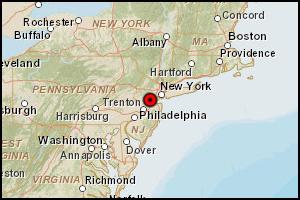 Cornell Dubilier Electronics in South Plainfield, New Jersey (Middlesex County) manufactured electronics parts at the site from 1936 to 1962 and it is alleged that the company dumped PCB-laden materials and other hazardous substances into soil there. It was added to the Superfund National Priorities List on July 28, 1998 because of harmful chemicals found in soil and groundwater.
Cornell Dubilier Electronics in South Plainfield, New Jersey (Middlesex County) manufactured electronics parts at the site from 1936 to 1962 and it is alleged that the company dumped PCB-laden materials and other hazardous substances into soil there. It was added to the Superfund National Priorities List on July 28, 1998 because of harmful chemicals found in soil and groundwater.
Current Status - Ongoing cleanup. EPA's investigations have included sampling on-site soil and buildings, soil from adjacent residential properties, groundwater, sediments and surface water. Short-term actions have involved interior cleaning of PCB-contaminated dust from 15 homes and the excavation of PCB-contaminated soil from 18 residential yards. Long-term actions have included relocation of 13 active businesses from the industrial park and the demolition and removal of 18 contaminated buildings. Soil and debris from an area at the industrial park designated as the capacitor disposal area has been excavated and disposed of off-site. - Coeur D'Alene/Bunker Hill Smelter - ID
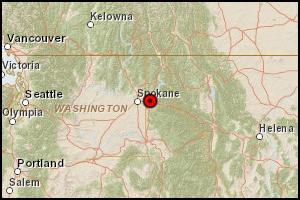 The Bunker Hill Smelter, was a large smelter located in Kellogg, Idaho. As a result of area mining, large amounts of lead and other metals were dumped directly into the Coeur d'Alene River and its tributaries. In 1983, the Bunker Hill Smelter was added to the National Priorities List by EPA.
The Bunker Hill Smelter, was a large smelter located in Kellogg, Idaho. As a result of area mining, large amounts of lead and other metals were dumped directly into the Coeur d'Alene River and its tributaries. In 1983, the Bunker Hill Smelter was added to the National Priorities List by EPA.
Current Status - Ongoing cleanup. Conducting five year review at this site because contamination remains above what is permitted for unlimited exposure and unrestricted use. - Gowanus Canal - NY
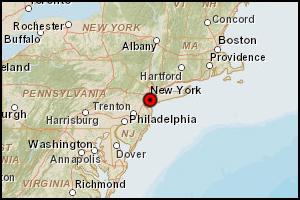 The Gowanus Canal, in Brooklyn, New York, empties into New York Harbor. Contamination at this site is suspected to be from industrial facilities along the canal, including gas manufacturing plants, uncontrolled sewage discharges, and storm water runoff. The toxic sludge measures as deep as 22 feet. This site was placed on the National Priorities List in March 2010.
The Gowanus Canal, in Brooklyn, New York, empties into New York Harbor. Contamination at this site is suspected to be from industrial facilities along the canal, including gas manufacturing plants, uncontrolled sewage discharges, and storm water runoff. The toxic sludge measures as deep as 22 feet. This site was placed on the National Priorities List in March 2010.
Current Status - Dredging and capping cleanup activities will begin in 2017. - Iron King Mine - Humboldt Smelter - AZ
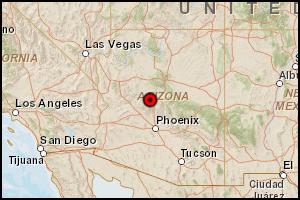 The Iron King Mine was an active mine, off and on, from 1906 until 1969. Ore from Iron King Mine was processed at the Humboldt Smelter, which operated from the late 1800s until the early 1960s. In addition to mining, activities at the mine facility included waste reduction and converting mine tailings to fertilizer. The waste reduction facility sorted wastes, sent recyclable materials off-site, and disposed of construction debris in an on-site collapsed mine shaft. This site was placed on the National Priorities List in September 2008.
The Iron King Mine was an active mine, off and on, from 1906 until 1969. Ore from Iron King Mine was processed at the Humboldt Smelter, which operated from the late 1800s until the early 1960s. In addition to mining, activities at the mine facility included waste reduction and converting mine tailings to fertilizer. The waste reduction facility sorted wastes, sent recyclable materials off-site, and disposed of construction debris in an on-site collapsed mine shaft. This site was placed on the National Priorities List in September 2008.
Current Status - The Remedial Investigation at this site is complete and the feasibility study is currently underway. Remedial and removal activities continue. - Jackson Ceramics, Inc. - PA
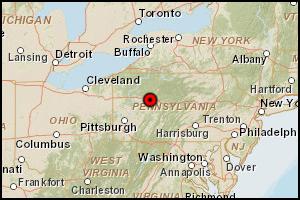 Jackson Ceramics is located in Falls Creek, Pennsylvania. The manufacturing process at the facility involved the production and painting of china. Lead and paint waste-contaminated wastewater was generated during the manufacturing process and the wastewater generated during the glazing and paint processes was discharged to a drainage ditch that led to an unlined lagoon.
Jackson Ceramics is located in Falls Creek, Pennsylvania. The manufacturing process at the facility involved the production and painting of china. Lead and paint waste-contaminated wastewater was generated during the manufacturing process and the wastewater generated during the glazing and paint processes was discharged to a drainage ditch that led to an unlined lagoon.
Current Status - Conducting Remedial Investigation. - Lower Darby Creek Area - PA
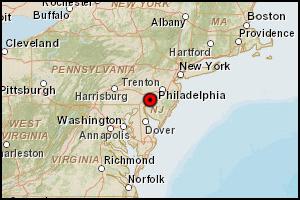 The Lower Darby Creek Area site consists of two landfills – the Clearview and Folcroft Landfills. Both landfills operated from the 1950s to the 1970s and were closed in the mid-1970s. Both landfills reportedly accepted a variety of wastes, including municipal, demolition, and hospital.
The Lower Darby Creek Area site consists of two landfills – the Clearview and Folcroft Landfills. Both landfills operated from the 1950s to the 1970s and were closed in the mid-1970s. Both landfills reportedly accepted a variety of wastes, including municipal, demolition, and hospital.
Current Status - For the Folcroft Landfill, the Remedial Investigation is being developed. The final risk assessment report is anticipated to be completed in late 2015. The Remedial Investigation for the Clearview Landfill should be completed in 2015. - Matthiessen and Hegeler Zinc Company - IL
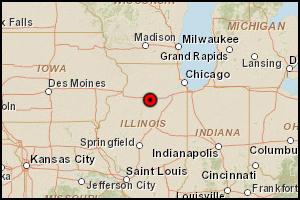 The site is a 160-acre former zinc smelting and rolling facility. It was in operation from 1858 to 1978. The site is located on the east side of LaSalle, Illinois. The former smelting and rolling processes produced pollution that remains on the site. Runoff from the pile washes directly into the river and sediment samples from the river bottom indicate elevated levels of these metals.
The site is a 160-acre former zinc smelting and rolling facility. It was in operation from 1858 to 1978. The site is located on the east side of LaSalle, Illinois. The former smelting and rolling processes produced pollution that remains on the site. Runoff from the pile washes directly into the river and sediment samples from the river bottom indicate elevated levels of these metals.
Current Status - Feasibility study is currently underway. - Omaha Lead - NE
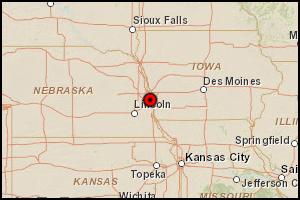 The Omaha Lead Site, located in Omaha, Nebraska, includes surface soil present at residential properties, child care facilities, schools, and other residential-type properties in eastern Omaha. It is the site of a lead-refining plant which operated from the early 1870s until 1996. During the operational period, lead and other heavy metals were emitted into the atmosphere through smoke stacks. The pollutants were transported downwind in various directions and deposited on the ground surface. This is the largest residential lead contamination cleanup in the nation.
The Omaha Lead Site, located in Omaha, Nebraska, includes surface soil present at residential properties, child care facilities, schools, and other residential-type properties in eastern Omaha. It is the site of a lead-refining plant which operated from the early 1870s until 1996. During the operational period, lead and other heavy metals were emitted into the atmosphere through smoke stacks. The pollutants were transported downwind in various directions and deposited on the ground surface. This is the largest residential lead contamination cleanup in the nation.
Current Status - Ongoing cleanup. The EPA has tested more than 41,176 Omaha properties for lead and cleaned up 11,425 residential yards. In October 2011, EPA completed its 10,000th cleanup of toxic lead from contaminated residential yards soil in the city of Omaha. - Raritan Bay Slag - NJ
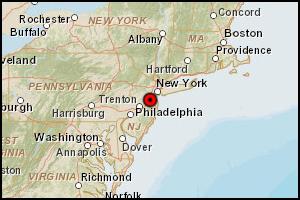 The Raritan Bay Slag Site is located in the Laurence Harbor section of Old Bridge and in Sayreville, Middlesex County, New Jersey. The Laurence Harbor seawall, which makes up part of the site, was reported to have had metal slag from blast furnace bottoms deposited along the beachfront in the late 1960s and early 1970s. Approximately 2,500 feet of the seawall have been contaminated.
The Raritan Bay Slag Site is located in the Laurence Harbor section of Old Bridge and in Sayreville, Middlesex County, New Jersey. The Laurence Harbor seawall, which makes up part of the site, was reported to have had metal slag from blast furnace bottoms deposited along the beachfront in the late 1960s and early 1970s. Approximately 2,500 feet of the seawall have been contaminated.
Current Status - Cleanup could take five to seven more years. - Standard Chlorine of Delaware, Inc. - DE
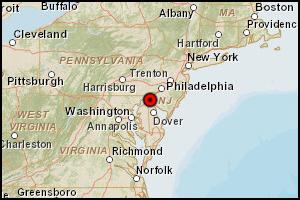 The Standard Chlorine of Delaware, Inc. site (aka Metachem), a 65 acre site in New Castle County, DE, was used to make chlorinated benzene compounds from 1966 to 2002. In the 1980s, over 569,000 gallons of chlorobenzenes and related chemicals spilled on the site, contaminating the groundwater, soil, sediments, surface water, and nearby wetlands. In 2002, the site's owner declared bankruptcy and abruptly closed the facility, leaving an additional 40 million pounds of chlorobenzenes and related chemicals in insecure tanks, pipelines, process vessels, and treatment systems.
The Standard Chlorine of Delaware, Inc. site (aka Metachem), a 65 acre site in New Castle County, DE, was used to make chlorinated benzene compounds from 1966 to 2002. In the 1980s, over 569,000 gallons of chlorobenzenes and related chemicals spilled on the site, contaminating the groundwater, soil, sediments, surface water, and nearby wetlands. In 2002, the site's owner declared bankruptcy and abruptly closed the facility, leaving an additional 40 million pounds of chlorobenzenes and related chemicals in insecure tanks, pipelines, process vessels, and treatment systems.
Current Status - Groundwater is being studied in order to prepare a future final remedy. Other cleanup methods are being tested to address the contaminated soil and sediments.
